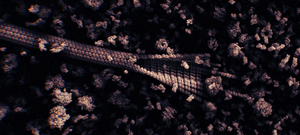Information
- Publication Type: Journal Paper with Conference Talk
- Workgroup(s)/Project(s):
- Date: August 2019
- Journal: IEEE Transactions on Visualization and Computer Graphics
- Volume: 26
- Number: 1
- Lecturer: Tobias Klein
- Event: IEEE VIS 2019
- DOI: 10.1109/TVCG.2019.2934612
- Call for Papers: Call for Paper
- Conference date: 2019
- Pages: 622 – 632
Abstract
Biologists often use computer graphics to visualize structures, which due to physical limitations are not possible to imagewith a microscope. One example for such structures are microtubules, which are present in every eukaryotic cell. They are part ofthe cytoskeleton maintaining the shape of the cell and playing a key role in the cell division. In this paper, we propose a scientifically-accurate multi-scale procedural model of microtubule dynamics as a novel application scenario for procedural animation, which cangenerate visualizations of their overall shape, molecular structure, as well as animations of the dynamic behaviour of their growth anddisassembly. The model is spanning from tens of micrometers down to atomic resolution. All the aspects of the model are driven byscientific data. The advantage over a traditional, manual animation approach is that when the underlying data change, for instance dueto new evidence, the model can be recreated immediately. The procedural animation concept is presented in its generic form, withseveral novel extensions, facilitating an easy translation to other domains with emergent multi-scale behavior.Additional Files and Images
Weblinks
BibTeX
@article{klein_2019_PMP,
title = "Multi-Scale Procedural Animations of Microtubule Dynamics
Based on Measured Data",
author = "Tobias Klein and Ivan Viola and Eduard Gr\"{o}ller and Peter
Mindek",
year = "2019",
abstract = "Biologists often use computer graphics to visualize
structures, which due to physical limitations are not
possible to imagewith a microscope. One example for such
structures are microtubules, which are present in every
eukaryotic cell. They are part ofthe cytoskeleton
maintaining the shape of the cell and playing a key role in
the cell division. In this paper, we propose a
scientifically-accurate multi-scale procedural model of
microtubule dynamics as a novel application scenario for
procedural animation, which cangenerate visualizations of
their overall shape, molecular structure, as well as
animations of the dynamic behaviour of their growth
anddisassembly. The model is spanning from tens of
micrometers down to atomic resolution. All the aspects of
the model are driven byscientific data. The advantage over a
traditional, manual animation approach is that when the
underlying data change, for instance dueto new evidence, the
model can be recreated immediately. The procedural animation
concept is presented in its generic form, withseveral novel
extensions, facilitating an easy translation to other
domains with emergent multi-scale behavior.",
month = aug,
journal = "IEEE Transactions on Visualization and Computer Graphics",
volume = "26",
number = "1",
doi = "10.1109/TVCG.2019.2934612",
pages = "622--632",
URL = "https://www.cg.tuwien.ac.at/research/publications/2019/klein_2019_PMP/",
}


 paper
paper

